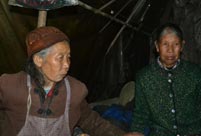

WASHINGTON, April 29 -- U.S. researchers said Wednesday they have successfully treated three babies with a life- threatening breathing condition thanks to a 3D-printed airway splint that can adapt to tissue growth over time.
"Today, we see a way to cure a disease that has been killing children for generations," senior author Glenn Green, associate professor of pediatric otolaryngology at the University of Michigan told a teleconference with reporters.
Green noted that the first child to receive this implant three years ago appears to be cured and that the splint has now functionally degraded.
Before the procedure, all the three babies, ranging in age from three to 16 months old, had the same life-threatening condition: a terminal form of tracheobronchomalacia, which causes the windpipe to periodically collapse and prevents normal breathing. There was no cure and life-expectancies were grim. "It is hard to convey how very sick these children were," Glenn said.
All the children had been in the intensive care unit for months, he said. Breathing tubes were placed into their necks, and they were put on artificial ventilators but still had repeated episodes that involved resuscitations.
One "was unable to have any food in his stomach without having cardiac arrests," while another's immune system was so weakened that even minor colds were life-threatening.
To save their lives, researchers designed 3D-printed splints to support and keep open the collapsed airway that were tailored to each child's anatomy.
The printed splints were hollow and porous tubes that could be sutured over the affected airways and were made of polycaprolactone, a polymer that harmlessly dissolves in the body.
After the procedure, the growth of the airways was followed with CT and MRI scans, and the device was shown to open up to allow airway growth for all three patients. None of them have caused any complications.
"We were pleased to find that all of our cases so far have proven to improve these patients' lives," Green said.
"Now these children are home with their families. Holidays are not spent in the hospital anymore. Instead of lying flat on their backs for weeks on end, these children are learning to sit and stand and run as they are no longer sedated and paralyzed."
The findings, published in the U.S. journal Science Translational Medicine, represented not only a new surgical option for patients suffering from obstructive airway diseases, but also the promise for 3D printed materials in medicine.
"That could apply to orthopedic conditions, that could apply to cardiovascular conditions, even gastrointestinal conditions, anything where you're expecting a significant increase in either organ or anatomic structural change," said lead author Robert Morrison, a resident head and neck surgeon at the University of Michigan. "The possibilities are really limitless."
 J-11 fighters in air exercise
J-11 fighters in air exercise Beauties dancing on the rings
Beauties dancing on the rings Attendants-to-be join Mr. & Miss Campus Contest
Attendants-to-be join Mr. & Miss Campus Contest Beijing's toughest anti-smoking law takes effect
Beijing's toughest anti-smoking law takes effect Family lives in cave for about 50 years in SW China
Family lives in cave for about 50 years in SW China PLA soldiers operating vehicle-mounted guns in drill
PLA soldiers operating vehicle-mounted guns in drill Blind carpenter in E China's Jiangxi
Blind carpenter in E China's Jiangxi China hosts overseas disaster relief exercise for the first time
China hosts overseas disaster relief exercise for the first time 20 pairs of twins who will become flight attendants in Sichuan
20 pairs of twins who will become flight attendants in Sichuan Obama is sowing discontent in S.China Sea
Obama is sowing discontent in S.China Sea Rescuers work through night to reach cruise ship survivors
Rescuers work through night to reach cruise ship survivors Driving through limbo
Driving through limbo Facing down MERS
Facing down MERSDay|Week